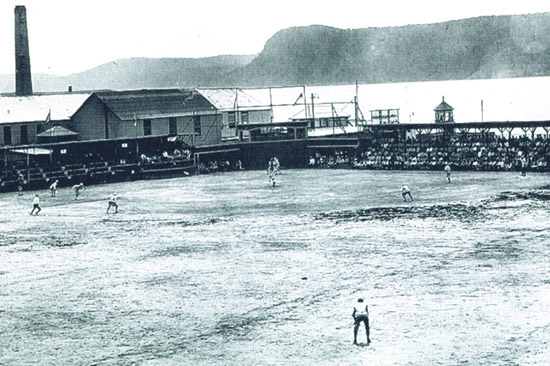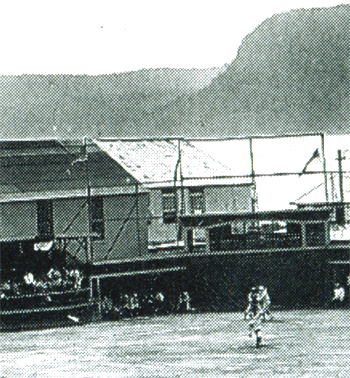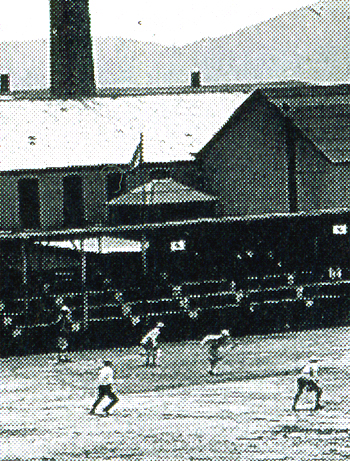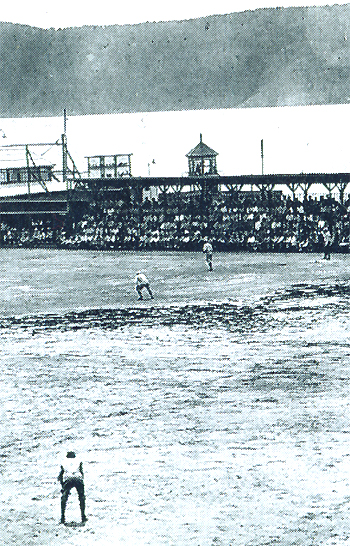 Above is how Lawes Field at Sing Sing Prison looked in the 1920s and 1930s.
The image is excerpted from Guy Cheli's Images of America: Sing Sing Prison, A link to the NYCHS excerpts presentation of Guy Cheli's book appears at the bottom of each main page in this current presentation. At right is a close-up detail from the same Lawes Field photo in Images of America: Sing Sing Prison. In the detail close-up, the Hudson (of "up the river" fame) and the Palisades can be seen in the background as the pitcher delivers the ball, the batter prepares to swing and the catcher awaits the delivery during a 1923 game. The above detail also shows spectators in the stands and players in the dugout.
At left is a close-up detail from the same Lawes Field photo in Guy Cheli's book. In the detail close-up, the runner on first base breaks for second base and the umpire breaks in that direction too to be in position to call the play. The detail also shows the first base coach, the first baseman and second baseman. If the flag is any indication, there is not much wind blowing to impact the play. These close-up detail images also appear on Page 8 of the NYCHS presentation of Dr. Robert L. Gold's Searching Sing Sing for My Father. A link to that NYCHS excerpts presentation appears at the bottom of each main page in this John Law presentation.
At right is a close-up detail from the same Lawes Field photo in Images of America: Sing Sing Prison. In the detail close-up, outfielder leans in to pick up any movement of the ball from the bat in the event that the batter connects. The detail also shows the shortstop playing deep and the third baseman playing off the line. Commenting on this John Law presentation, Dr. Gold notes: Sports -- baseball in particular -- were played by New York State inmates before Lewis Lawes became Sing Sing warden. In 1914, baseball, handball and other field sports were played at Auburn Prison. "Baseball made its debut at Sing Sing under Warden McCormick only in mid-July of 1914 . . ." Page 406, Harold Seymour, Baseball: The People's Game. New York: Oxford University Press, 1990. Seymour has an entire chapter (25) entitled "Baseball Breaks Into Prison."
|


